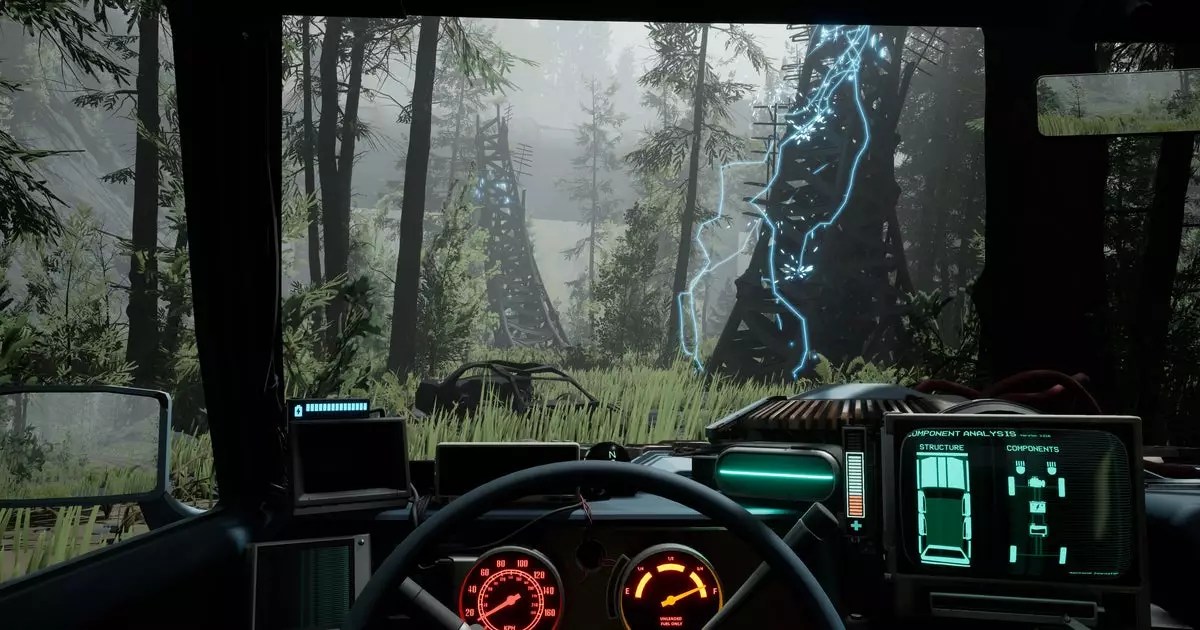Pacific Drive, developed by Ironwood Studios, presents players with a chilling voyage through a post-apocalyptic landscape, where survival hinges on a dilapidated station wagon infused with paranormal elements. The game effectively establishes a tense atmosphere, a quality that’s particularly appealing to fans of the horror-survival genre. Players are tasked with maintaining their vehicle, repairing corroded parts, and crafting makeshift technology from scant resources. However, as enjoyable as the experience may be, some players found the crafting mechanics daunting and time-consuming, often stalling the immersive pacing of the game. While this aspect was met with mixed perceptions, an exciting update now aims to cater to various player preferences, ultimately redefining the gameplay experience.
One of the most significant changes in this update is the introduction of customizable difficulty presets, designed to cater to both casual players and hardcore survivalists. The developers have introduced several modes, such as “Scenic Drive,” which appeals to those looking for a more laid-back experience by minimizing danger and crafting requirements. On the other end of the spectrum, “Olympic Gauntlet” ramps up the difficulty, increasing hazards and making repairs far more challenging. This deliberate contrast is crucial; balancing gameplay allows players to find a suitable level of challenge that resonates with their personal gaming style, thereby enhancing the overall enjoyment of Pacific Drive.
However, it’s worth acknowledging a potential pitfall of offering such broad accessibility. Casual players may benefit from the easing of crafting and survival requirements, but it raises questions about the overall challenge presented in the game. Is the essence of Pacific Drive—the struggle for survival amidst chaos—at risk of being diluted? The introduction of lethal options, such as the “Trunk Bonk kills,” serves as a humorous yet cautionary reminder of the game’s inherent dangers. While this makes for an intriguing feature, it does add complexity to the balancing act of difficulty versus frustration.
The most captivating aspect of the update is perhaps the extensive customization offered to players. With the ability to tweak numerous difficulty sliders, enthusiasts can sculpt their gameplay experience to suit their unique preferences—be it making the terrain more treacherous or ensuring that engine breakdowns are a more rare occurrence. This freedom could yield an engaging replayability factor, allowing players to continuously experiment with different settings and gameplay combinations.
Yet, this liberality may also complicate the player’s experience. If players are inundated with too many options, they may find themselves grappling with indecision, potentially detracting from the overall enjoyment. While player agency in crafting their journey is vital, it is also critical for developers to maintain coherent gameplay mechanics that draw players into the core aspects of the game. Finding that perfect equilibrium between choice and clarity is essential for Pacific Drive to thrive in a crowded gaming market.
In addition to the gameplay updates, players can enrich their experience by incorporating personal music into the game. This inclusion adds a welcome layer of customization, allowing players to curate their own soundscapes while traversing the hauntingly beautiful landscapes of Pacific Drive. The game’s original soundtrack has received praise for its quality, standing as a testament to the developers’ dedication to creating an immersive auditory experience.
However, even with the ability to modify this aspect, one must consider whether the core soundtrack can still hold its own amidst potential distractions from player-selected music. Balancing the unique ambiance that Pacific Drive endeavors to create with the diverse musical choices available to players could present challenges.
The recent updates to Pacific Drive represent a commendable effort to accommodate diverse player preferences while maintaining the essence of the game. The newfound flexibility in difficulty settings resonates with the modern gaming ethos that champions player agency. However, as with any significant overhaul, it is crucial to remain mindful of the core mechanics and atmosphere that contribute to the game’s appeal. Ultimately, should Pacific Drive navigate these complexities successfully, it may well solidify its position in the pantheon of unforgettable survival horror experiences. Only time will tell if these adjustments enhance or detract from the thrill of the drive.


Leave a Reply